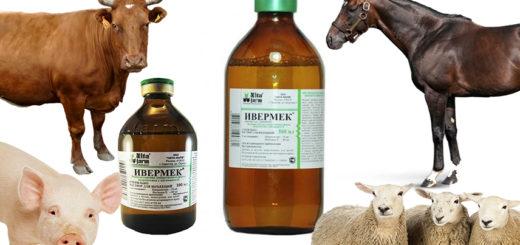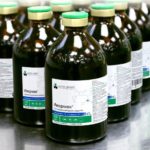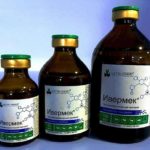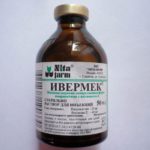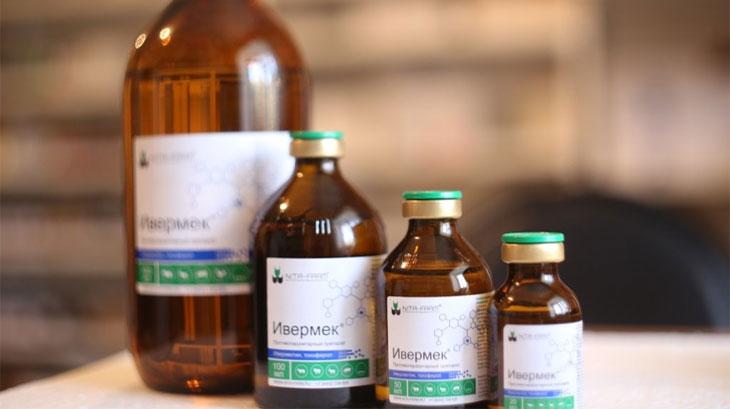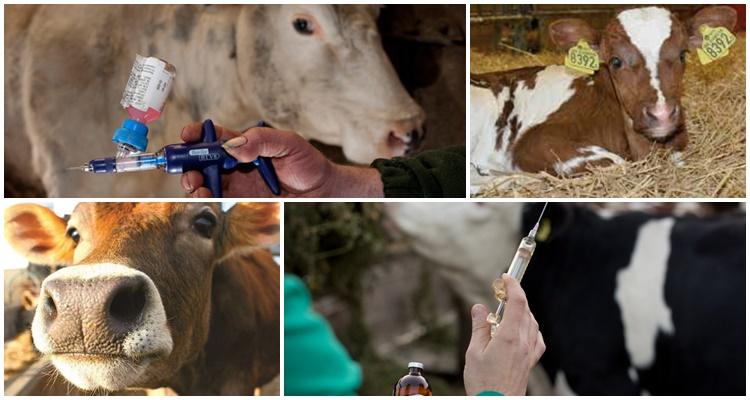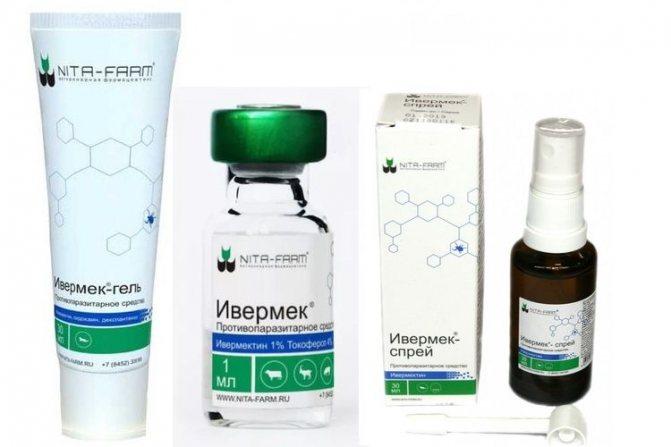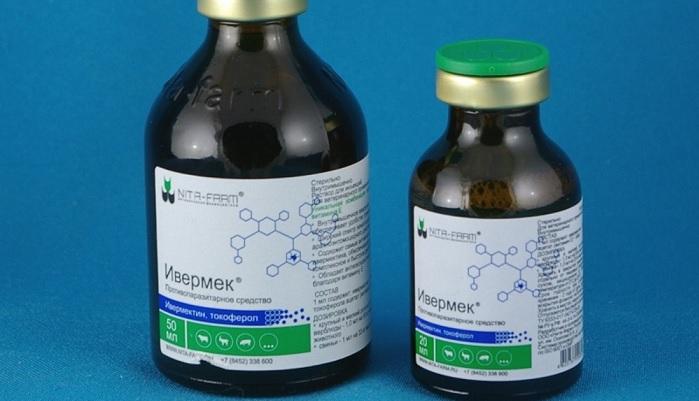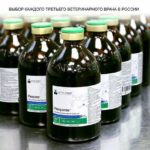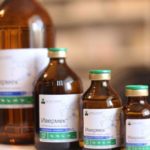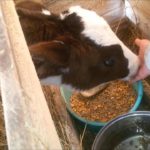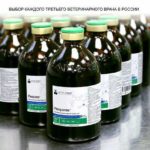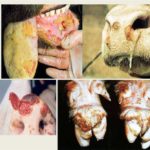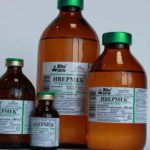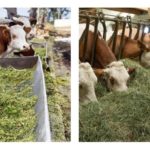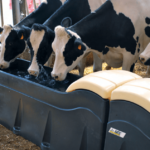The cattle population systematically requires anthelmintic treatment. Animals can become infected with worms on pasture, when consuming water, or during the period of being kept in stalls from each other. Farmers use various drugs. "Ivermek", in accordance with the instructions for use for cattle, is a complex drug that can act on many groups of helminths.
Composition and release form of the drug
"Ivermek" is a domestic anthelmintic drug intended for animals. The complex action allows it to be used for therapeutic and preventive purposes. Suitable for the treatment of lichen, arachnoenthomosis, helminthic infestations of mixed type.
The drug was developed by ZAO Nito-Pharm, located in the city of Saratov and registered by Rosselkhoznadzor in 2014. International nonproprietary name of the drug: ivermectin, tocopherol. Available in 2 dosage forms: solution for injection and solution for oral use. 1 milliliter of Ivermek consists of basic,
- ivermectin - 10 milligrams;
- tocopherol acetate - 40 milligrams.
And auxiliary components:
- demethylacetamide - 400 milligrams;
- polyethylene glycol-660-hydrokeistearate - 150 milligrams;
- benzyl alcohol - 10 milligrams;
- distilled water for injection - up to 1 milliliter.
It is a clear, opalescent liquid. The medicine may be colorless or have a light yellow tint. Packaged in dark glass bottles with a capacity of 500, 400, 250, 200, 100, 50, 20, 10, 1 milliliter, closed with rubber stoppers reinforced with aluminum caps. Or in opaque polymer bottles with plastic screw caps.
The injection form is used for cows, deer, rams, goats, pigs. The oral form is suitable for poultry (chickens, geese, ducks, turkeys, quails).
Advantages and disadvantages
Ivermek is administered to cattle herds subcutaneously or intramuscularly.
Injections must be done wearing rubber gloves, the injection site is treated with an alcohol solution, and disposable sterile syringes are used.
Pharmacology and biological effects
The main active ingredient of the drug is ivermectin, which is active against pulmonary and gastrointestinal nematodes (larvae and mature individuals), gadfly larvae, blood suckers, and various types of ticks. Chlorine ions, penetrating through the membranes of nerve and muscle cells of parasites, interfere with the passage of nerve impulses, this causes paralysis and death of the parasites. In veterinary medicine it is used to treat cattle, sheep, goats, pigs, and poultry.
After injection, ivermectin quickly penetrates the systemic bloodstream and organs, acts within 1.5-2 weeks, and is excreted by the kidneys. Found in cow's bile and milk. The medicine is a substance moderately dangerous to humans; it is poisonous to fish and bees. Ivermectin is a hazard class 1 substance (extremely toxic to humans) in high concentrations.
The remains of Ivermek should not be poured into water bodies. Medicine containers are not reused and are disposed of in accordance with the instructions.
Instructions for use and dosage for cattle
"Ivermek" is used for cattle livestock in cases of livestock diseases:
- psoroptosis;
- sarcoptic mange;
- siphunculatosis;
- hypodermatosis;
- chorioptosis;
- thelaziosis;
- trichocephalosis;
- strongylatosis.
Used for mixed parasitic infections. The livestock is processed before the start of the stall period and before putting it out to pasture. Animals are treated for botfly larvae when the insects stop flying.
Ivermec is injected subcutaneously or intramuscularly into the neck or croup. It is used once, the dosage is 1 ml of the prepared solution for every 50 kilograms of the animal’s weight. In severe cases of sarcoptic mange, the drug is administered twice with an interval of 1-1.5 weeks.
For cows, if the volume of the drug exceeds 10 milliliters, it is administered in several areas of 2-3 milliliters.
The drug is not prescribed to pregnant cows. Healthy calves over 3 months of age can be pricked without fear. Before introducing Ivermek to the entire herd, a control group of 7-10 animals is selected. It is administered to adult cows and calves to check for complications. If the animals tolerate the drug well, after 3 days the rest of the livestock is treated.
Side effects
After injection, some animals experience depression, loss of appetite, and diarrhea may occur. Calves may have a slight increase in temperature. The condition of the animals returns to normal after 2-3 days and does not require treatment. If symptoms persist, you should call your veterinarian.
When Ivermec is contraindicated
The drug is not used for lactating cows, weakened and sick animals. Milk after treatment can be consumed after 28 days, the same period must pass before slaughter. Ivermek should not be administered to pregnant animals.
Special instructions and personal preventive measures
Injections of livestock are carried out in long-sleeved gowns, hands must be wearing protective gloves. While using Ivermek, eating, smoking, and drinking are prohibited. People with allergies should not use the product. After work, be sure to wash your hands with detergents. The skin and eyes, if the drug gets into them, are washed with running water.If the drug is accidentally ingested, the victim must urgently go to a medical facility and explain to the toxicologist what drug was taken.
Storage conditions and shelf life
The shelf life of the medicine is 2 years from the date of manufacture. The drug is stored in places away from children and animals, away from direct sunlight, and not heated above +25 °C. Do not place medication packaging near food or feed. After opening the container, the drug should be used within 42 days. That's why the bottle is marked with the date it was opened. It is prohibited to use the medicine after the expiration date.
Cost and analogues
The cost of the drug depends on the volume of the bottle. A 1 milliliter ampoule costs less than 100 rubles; if there are a large number of animals, it is more profitable to purchase a bottle with a capacity of 50-100 milliliters, its price is about 400 rubles.
Analogues of the product are:
- “Novomek” - has the same active ingredient and a longer shelf life, 5 years;
- "Baymek" is a drug with an identical composition, produced by the German pharmaceutical company Bayer;
- "Ganamectin" is a medicine with an identical active substance, the period of use is 4 years.
“Ivermek” and its analogues are purchased in veterinary pharmacies; a prescription is not required.

